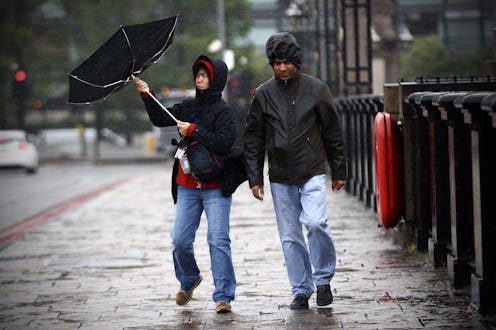News
Tropical Storm Colin Is Coming For The U.S.
The 2016 hurricane season has begun, and Tropical Storm Colin is on course to hit Florida along with the southern East Coast. Colin formed in the Gulf of Mexico last week, and is threatening to bring heavy rains and flooding to many of the areas it impacts, prompting Florida Gov. Rick Scott to declare a state of emergency Monday. When will Tropical Storm Colin hit the U.S.?
Colin is expected to make landfall in northwestern Florida on Monday evening and continue to move inland throughout the night. But Florida and neighboring states were already experiencing the effects of heavy rains on Monday morning. The Tampa area could see a storm surge of one to three feet at high tide. NPR reported that 3-5 inches of rain are expected, with as much as 8 inches in some areas.
The National Hurricane Center (NHC) reported that Colin's center is expected to move across northern Florida and southeastern Georgia over Monday night and into Tuesday morning. The NHC noted that the heaviest rains and winds will be further away from the storm's center. As Colin's center moves out to sea on Tuesday, far-east portions of North and South Carolina may be impacted.
The areas most likely to see the maximum predicted rainfall of 8 inches are western and northern Florida, western Cuba, the northeastern Yucatan peninsula, southeastern Georgia, and the coasts of the Carolinas. The NHC also noted that tornadoes are possible across Florida and southern Georgia amid tropical storm conditions through Monday night.
Tropical Storm Colin is the first tropical system to develop during the 2016 hurricane season, which began June 1. But it's not the first tropical event of the year. Hurricane Alex was downgraded to a tropical storm when it struck the Azores Islands in January. It was the first hurricane to form in the Atlantic in January since 1938. Tropical Storm Bonnie impacted South Carolina's coast with heavy rains in May.
The Miami Herald reported that Tropical Storm Colin is messily organized, which means it could break up as it hits Florida and moves inland. We can't be sure of the extent of its impact throughout the Southeast through Tuesday, but heavy rains and winds are almost sure to impact Florida, Georgia, North Carolina, and South Carolina.
